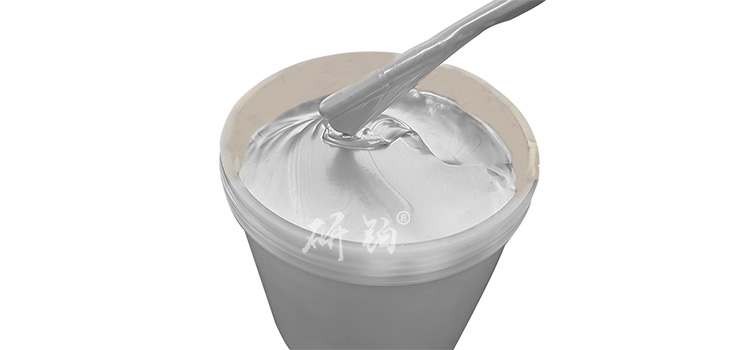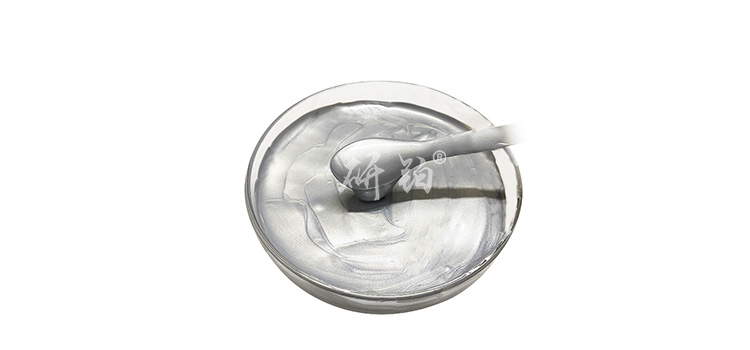

Hotline:0755-22277778
Tel:0755-22277778
Mobile:13826586185(Mr.Duan)
Fax:0755-22277776
E-mail:duanlian@xianjinyuan.cn
Silver powder mainly has several typical shapes such as spherical, flake, and dendritic. Among them,Flake silver powdersAs a conductive filler, when forming a conductive path, due to the linear or surface contact between its particles, compared to the point contact of spherical silver powder, flake silver powder has relatively lower resistance; At the same time, the specific surface area of flake silver powder is relatively larger than that of spherical silver powder, and the surface activation energy is lower than that of spherical or quasi spherical silver powder, so its oxidation degree and oxidation tendency are lower; In addition, flake silver powder has a wide range of deflection and anti bending and tensile properties, which can greatly improve the reliability of electronic components. Therefore, flake silver powder has a wide range of applications in microelectronics technology, flexible display technology, photovoltaic industry and many other fields.
At present, the preparation methods of flake silver powder include mechanical ball milling, template method, chemical reduction method, light induction method, etc.
1. Mechanical ball milling method
The preparation of flake silver powder by mechanical ball milling method usually uses AgNO3 or Ag2O as the silver source, and uses chemical precipitation method with reducing agent to reduce it to different particle sizes under the protection of additives or dispersantsSpherical silver particlesThen, by controlling parameters such as ball to material ratio, ball milling aids, solid-liquid ratio, and ball milling time, spherical silver particles were ball milled using mechanical ball milling to obtain flake silver powder. The ball milling process is actually achieved by grinding the ball inside the tank, and when it falls from the highest point of the tank, it exerts a "hitting" effect on the spherical silver powder located below the tank, causing the spherical silver powder to deform into flake silver powder.
At present, the particle size of flake silver powder prepared by mechanical ball milling method is generally in the micrometer range. The silver powder has a bright color, high density, good mechanical properties, and a large specific surface area; High yield and relatively low cost are currently one of the main methods for producing ultrafine flake silver powder.
However, the mechanical ball milling method also has some unavoidable shortcomings in the production of silver powder: poor reproducibility of the ball milling process can easily cause unstable batch quality of silver powder products; In addition, impurities are easily introduced during ball milling, affecting the purity of silver powder, and hardening occurs, making it difficult to achieve the required fineness and high energy consumption.

2 Template Method
Template method is a special structure formed by self-assembly of template agents in solution, which selectively adsorbs organic compounds on a certain crystal surface of the crystal nucleus, reduces the surface energy of the crystal surface, promotes directional growth, and generates non spherical structures. It includes hard template method, soft template method, and biological template method.
The hard template method has a strong confinement effect in the preparation of micro nano structures, which can strictly control the size and dimensions of materials. However, the post-processing of synthesis is relatively complicated, often requiring the use of strong acids, strong bases, or organic solvents to remove the template. This not only increases the process flow, but also easily damages the micro and nano structures inside the template. The biological template method requires specific bacteria or biological materials, is complex to operate, difficult to control, and has a relatively slow reaction process.
In addition, the obtained non spherical particles often exist as by-products of spherical particles, and the method itself has high randomness, uncertainty, and low yield. Therefore, it is currently difficult to directly apply it in industrial production. The soft template method controls the morphology, size and orientation of nanoparticles through chemical action. Usually, various types of surfactants, micro lotion, and the self-organized structure of polymers are used. Compared with the other two methods, the soft template is easy to remove.
The template method has the advantages of simple process, good reaction reproducibility, and easy control for preparing nanomaterials with special morphologies. However, this method is only effective in preparing nanosilver sheets, and there are still many problems to be solved for the preparation of micrometer sized silver sheets with larger diameters.
3 Chemical Reduction Method
Chemical reduction method refers to a type of method for preparing silver powder by reducing silver compounds with reducing agents under liquid, solid or gas phase conditions. The preparation of flake silver powder by chemical reduction method involves a process of chemical reduction and precipitation, including several steps such as reduction of silver ions, supersaturation, nucleation, formation of silver crystals, and growth and aggregation of silver nuclei. During the process of silver particle precipitation, methods such as light radiation and the addition of other auxiliary chemicals are used to obtain silver powder with a sheet-like morphology.
The flake silver powder prepared by chemical method will not be further contaminated by mechanical ball milling, with high purity and uniform particle structure. Moreover, this method can accurately control the reaction conditions, which is beneficial for obtaining flake silver with controllable particle size and shape.
However, the concentration of silver particles is low, the cost is high, and the yield is low, which cannot meet the large demand for flake silver powder. Increasing the concentration of silver particles in the reaction system will lead to uncontrollable morphology and wide particle size distribution range of nano silver powder. At the same time, the poor mechanical properties of the powder lead to an increase in zero position resistance when used in the slurry.
To ensure good dispersibility in the preparation of silver powder by chemical reduction method, it is generally necessary to add a large amount of dispersant (protective agent), which is difficult to completely remove in subsequent washing, and some even contain sulfur elements. Under certain temperature and humidity conditions,Conductor electrode materialIonized Ag reacts chemically with sulfur in the environment to produce black Ag2S, which increases the sulfurization and resistance of the product. Some of the prepared sheet-like ultrafine silver powders have poor dispersibility and severe agglomeration.
On the one hand, it causes poor density, such as the presence of tiny pores, tiny cracks, etc. On the other hand, the more severe the agglomeration, the lower the tap density, which is modulated by silver powderSilver paste rolling pasteThe adhesive roller is not easily detached during printing and has a high shrinkage rate. The sintered film is loose, forming a loose conductive network.
4 Light Induction Method
The light induction method changes the growth direction of silver crystal nuclei through light irradiation, and different light sources can be directly used for irradiation to obtain non spherical silver particles with different morphologies. The entire process of light induction can be divided into three stages: induction, growth, and maturation.
The use of light induced method to prepare ultrafine flake silver powder has the advantages of simple process and equipment, and the product is not easily contaminated. It is one of the alternative methods to replace the current ball milling method. However, the color of the flake silver powder prepared by the light induction method is not bright, and the appearance of the silver paste after sintering becomes dark and yellowish. Moreover, due to the difficulty in controlling the operating conditions, the particle size of the prepared flake silver powder is not uniform, and the reaction time is too long. The randomness and uncertainty of the method itself are large. Therefore, it is difficult to achieve industrialization of the light induction method for preparing flake silver powder based on the current research status.

When it comes to the application of flake silver powder, it is necessary to mention the "diameter to thickness ratio", which refers to the ratio of the particle size of flake silver powder to the thickness of the layer. The aspect ratio, as one of the important technical indicators for evaluating the degree of powder flaking, directly determines the scope of its application.
The flake morphology of the powder is not a standard circle, and the thickness of different parts also varies, so the diameter to thickness ratio of flake silver powder is only an estimated value. Silver powder flakes with a larger diameter to thickness ratio often exhibit lower bulk density and a higher number of silver powder particles per unit volume, and are generally used forThin film switch conductive silver pasteIn the field, it can also exhibit excellent conductivity even at lower silver content; The flake silver powder with a smaller diameter to thickness ratio often exhibits higher tap density and is generally used in the fields of high silver content conductive silver paste and HJT silver paste in the photovoltaic industry.


Advanced Institute (Shenzhen) Technology Co., Ltd, © two thousand and twenty-onewww.avanzado.cn. All rights reservedGuangdong ICP No. 2021051947-1 © two thousand and twenty-onewww.xianjinyuan.cn. All rights reservedGuangdong ICP No. 2021051947-2